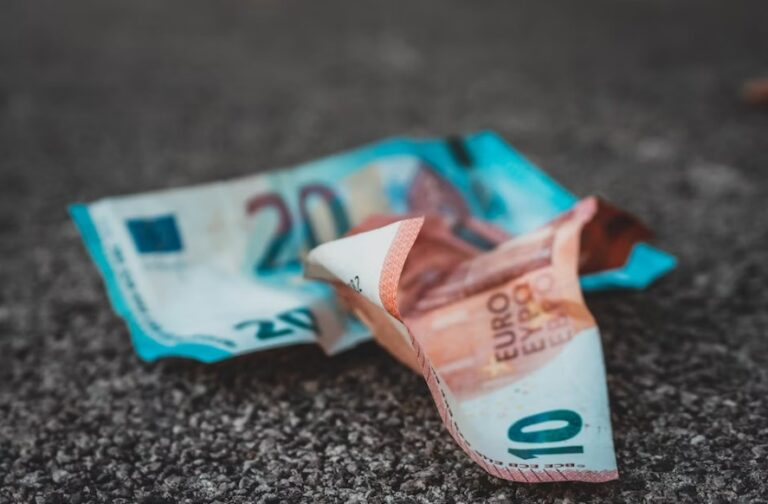Hyperinflation is an extreme economic condition characterized by rapid and uncontrolled increases in the general price level of goods and services in an economy. It is a situation where the inflation rate reaches extraordinary levels, typically over 50% per month or even per day, causing the value of a currency to drop drastically.
In such circumstances, money loses its purchasing power rapidly, leading to economic and social instability. Understanding the causes and effects of hyperinflation is crucial for individuals, businesses, and governments to mitigate its impact and prepare for such situations.
In this article, we will explore the causes and effects of hyperinflation, provide historical examples, and offer tips on preparing for such economic crises.
Table of Contents
Causes of hyperinflation
The following are the causes of hyperinflation:
- Excessive money supply
Hyperinflation can occur when there is an excessive increase in the money supply in an economy. When the central bank or the government prints too much money or injects too much liquidity into the economy, money is available more than the demand for goods and services. This leads to excess money chasing a limited number of goods, causing the prices to skyrocket.
- Increase in money velocity
Another cause of hyperinflation is an increase in the velocity of money. This refers to the rate at which money changes hands in an economy. When people start to spend money faster, and the same money is used for multiple transactions, it leads to a higher demand for goods and services, increasing prices. If this trend continues, it can result in hyperinflation.
- Printing money to finance government spending
Governments may resort to printing money to finance their spending, especially during a financial crisis or war. However, if an increase does not match the increase in the money supply in production, it can lead to inflation and, eventually, hyperinflation. Moreover, when a government continues to print money to finance its spending, it erodes the currency’s value and leads to a loss of confidence in the economy.
Effects of hyperinflation
The following are the effects of hyperinflation:
- Loss of purchasing power
Hyperinflation results in a loss of purchasing power for consumers and businesses. As prices increase rapidly, the value of money decreases, and people can afford to buy less with the same amount of money. This leads to a decrease in the standard of living and increased poverty.
- Unemployment and reduced economic activity
Hyperinflation can also lead to high levels of unemployment and reduced economic activity. Businesses may struggle to adjust to rapidly changing prices, leading to reduced production, layoffs, and closures. Additionally, high inflation rates can discourage investment, leading to reduced economic growth.
- Disruption of international trade
Hyperinflation can lead to a disruption of international trade as businesses and consumers lose confidence in the currency. When the value of the currency drops rapidly, foreign buyers may not want to trade in that currency, making it difficult for the country to import goods and services. This can lead to shortages and further price increases.
4. Poverty and inequality
Hyperinflation can lead to increased poverty and inequality as those on fixed incomes, such as pensioners, are particularly affected by the loss of purchasing power. The cost of basic necessities such as food and healthcare can become unaffordable for many people.
Read also: Exploring inflation: what is it and how does it affect your wallet
Examples of hyperinflation
Here are some examples of hyperinflation:
Weimar Republic (Germany)
The Weimar Republic experienced hyperinflation in the early 1920s following World War I. The government printed money to pay off war debts, rapidly increasing the money supply. As a result, the prices of goods and services increased rapidly, doubling every few days. By November 1923, the monthly inflation rate had reached 29,500%, leading to widespread social and economic chaos.
Zimbabwe
Zimbabwe experienced hyperinflation from the late 1990s to 2009, with the peak inflation rate reaching over 79.6 billion percent per month in November 2008. The government printed money to finance its spending, leading to a rapid increase in the money supply. This caused prices to increase rapidly, with prices doubling every day. It led to widespread poverty, unemployment, and social unrest in Zimbabwe.
Venezuela
Venezuela has been experiencing hyperinflation since 2016, with the inflation rate reaching over 10 million percent in 2019. The government printed money to finance its spending, leading to a rapid increase in the money supply. This led to a sharp price increase, making it difficult for people to afford basic necessities such as food, medicine, and housing.
How to prepare for it
Hyperinflation can have a devastating effect on the economy and the financial well-being of individuals. Here are some ways to prepare for hyperinflation:
- Diversify your assets
Diversifying your assets can help reduce the risk of losing all your wealth. For example, investing in a mix of stocks, bonds, and real estate can help you hedge against inflation.
- Invest in hard assets
Investing in hard assets such as real estate, land, and commodities can help protect your wealth during hyperinflation. These assets have intrinsic value and can retain their value even when the currency loses its value.
- Keep cash and other liquid assets
During hyperinflation, cash can lose its value rapidly. However, keeping some cash and other liquid assets, such as precious metals and foreign currencies, can help you meet your immediate needs.
- Consider moving money to a stable currency
If you are worried about the stability of your country’s currency, you may consider moving your money to a stable foreign currency such as the US dollar, euro, or Swiss franc.
- Invest in companies that are resistant to inflation
Some companies are resistant to inflation, such as those that produce essential goods and services, such as food and utilities. Investing in these companies can help you protect your wealth during hyperinflation.
- Consider gold and other precious metals
Gold and other precious metals have been considered safe haven assets during economic uncertainty. They have a long history of retaining their value during hyperinflation and can be an effective hedge against inflation.
Hyperinflation can lead to severe economic and social instability
Hyperinflation is a phenomenon that can have severe consequences on individuals, businesses, and entire economies. The economic effects of hyperinflation can include a loss of purchasing power, unemployment, and disruption of international trade.
Examples of hyperinflation include the Weimar Republic, Zimbabwe, Venezuela, and Hungary. By taking the measures discussed above, individuals can protect themselves from the devastating effects of hyperinflation.
Read also: Financial security, 9 ways to achieve it












